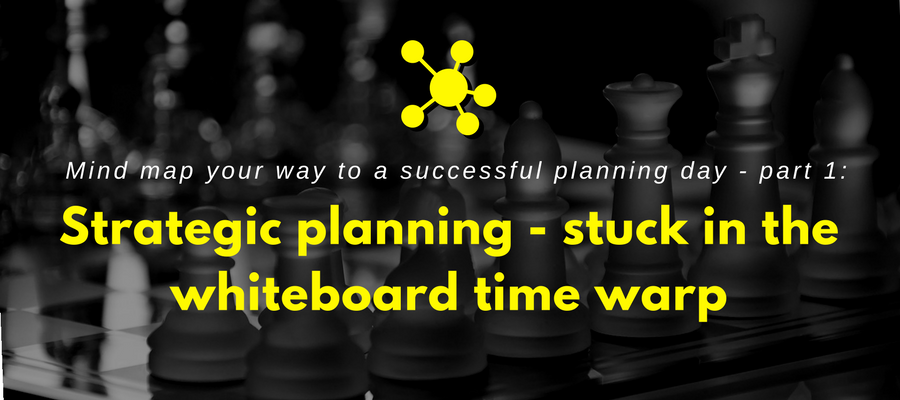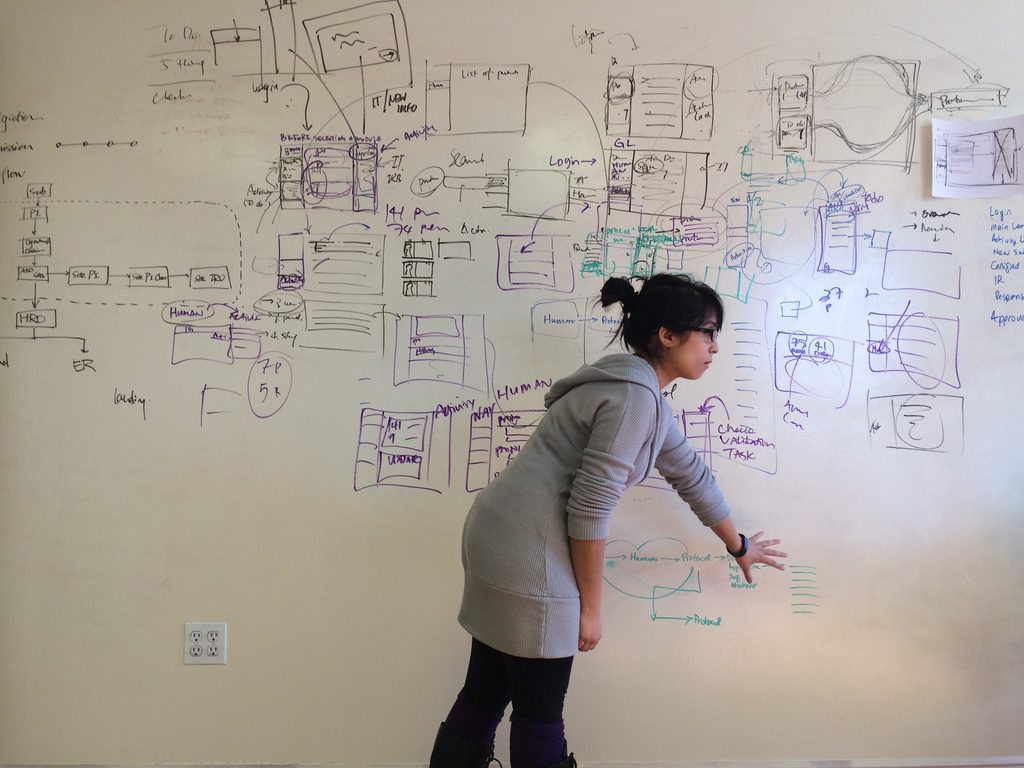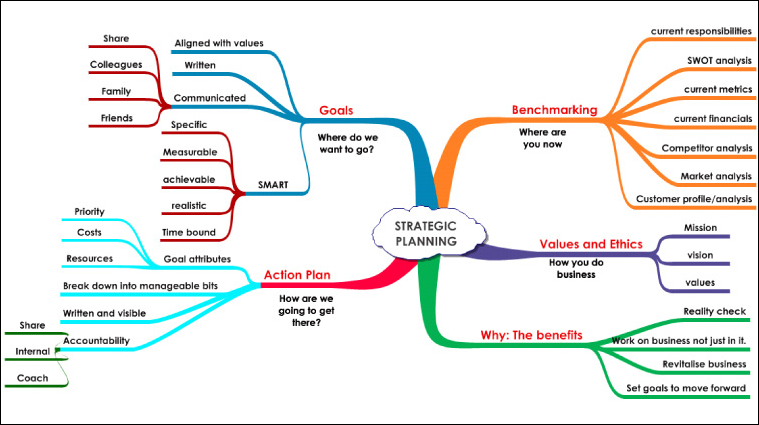Strategic Planning – Stuck in the Whiteboard Time Warp
(This is part 1 of a 5-part series on how to conduct a successful planning day using mind mapping software, by Alex Gooding)
Whiteboards and flipcharts have been the standard planning and thinking tools for most businesses since the 1960s. Mind mapping software offers a more efficient alternative.
 There would be few activities in any organization which technology has not transformed over the past two or three decades. The delivery of products and services has of course changed, but so too has the management of organizations themselves. Even for small businesses, non-profits and volunteer organizations, there is now a range of software and apps to assist with almost every aspect of managing, from budgeting to HR, communications, staff training and research.
There would be few activities in any organization which technology has not transformed over the past two or three decades. The delivery of products and services has of course changed, but so too has the management of organizations themselves. Even for small businesses, non-profits and volunteer organizations, there is now a range of software and apps to assist with almost every aspect of managing, from budgeting to HR, communications, staff training and research.
There is one notable exception, however, where even the most modern small organizations take a step backward into the 1960s.
That’s when the whiteboard was invented. Since then, they and their close ally – the flipchart – have found their way into just about every organization, big and small. They are, literally, part of the furniture of almost every office and even today, they still have a central role in brainstorming and strategic planning in many firms.
Programs to assist with these functions started to emerge in the early 2000s. The first iterations often required specialist facilitators and their expense put them beyond the reach of small organizations. Only recently have less expensive programs and apps emerged which can replace or supplement the whiteboard experience (for example, Boardthing, or Microsoft’s Office Lens), but the field is evolving and the currently available programs have their limitations. As a result, most small organizations are still using the traditional whiteboard model.
So what’s wrong with the whiteboard?
Whiteboards are cheap, reliable and easy to use – so if they aren’t broke, why fix them?
Think about the average small organization planning workshop. The facilitator moves from topic to topic, asking questions and seeking participant input. Either the facilitator or someone acting as scribe writes the responses on the whiteboard. With an experienced facilitator and a skilled scribe, planning sessions usually proceed reasonably well. But most small organizations use an in-house facilitator who is often less experienced and sometimes also acts as the scribe.
It’s easy in these circumstances for the session to go off-topic or run overtime. Later sessions can end up being rushed, the group can lose focus and misunderstandings may occur. People can feel that their concerns are not adequately recorded but may be reluctant to challenge the facilitator.
Even if things go well, when the session is completed, there will be a maze of handwritten text covering the whiteboard, along with bunch of boxes, arrows and symbols. This morass of information and ideas must be recorded and the whiteboard must be erased or cleared before the next session. Usually someone will photograph the whiteboard, or if you’re lucky, the whiteboard will have a built-in printer.
At the end of day there will be the time-consuming process of transcribing, collating and summarizing all of this material. Eventually, the outcomes will be circulated to the workshop participants for comment. By that time, many of them will have forgotten the event – or worse yet, they might feel that the record differs significantly from their memories of what was said during the planning sessions. As a result, they may become disengaged from the outcomes, and more importantly may lack ownership of the resulting strategic plan.
For very small NGOs and volunteer groups, undertaking strategic planning also puts a significant demand on resources. Not surprisingly, many organizations put the whole thing off; some have never done any real strategic planning at all.
Mind mapping – a flexible alternative
So despite their longevity, there is a case for looking for replacements for the venerable whiteboard, especially in planning sessions. However, even if organizations invest more time in planning (which they should), it’s not the sort of activity they undertake every day. This presents a problem with much of the software designed to assist with strategic planning days; the more specialised the program, the more difficult it is for small organizations to retain the skills required between planning sessions.
There is another limitation: Software designed specifically to assist with planning sessions may work well but have limited utility elsewhere. The hard work of turning the session outcomes into a cohesive, actionable strategic plan and then implementing it usually is managed with other software.
Sometimes the answer is less rather than more specialization. In this broader category of software tools, one provides a potential answer – mind mapping programs. Initially designed to support brainstorming, mind mapping has evolved into a mature and diverse set of applications used to create visual representations of concepts and ideas and the relationships between them.
These applications are relatively easy to use and are far more adaptable than most of the programs designed specifically for planning sessions – for example, they can also be used in developing and implementing the resulting strategic plans. As well as assisting with strategic planning – or for that matter, any other form of planning such as project development – they can also support many other management functions, which makes them a very useful tool for small organizations.
Next: 7 key advantages mind mapping brings to the table
Alex Gooding is an Australian consultant specialising in governance, strategic planning and organisation management who lives and works in the Blue Mountains, 90 kilometres (60 miles) west of Sydney. Alex also provides practical advice on mind mapping techniques and benefits, particularly for small organisations, through his Sociamind blog.
To learn more about the benefits of mind mapping software for strategic planning, check out my new e-course.
Other posts in this series
Part 2 – 7 key advantages mind mapping brings to the table
Part 3 – How to prepare for your first strategic planning day
Part 4 – How to make your planning day succeed: The program
Part 5 – How to use mind mapping software to run a strategic planning session




Leave a Reply